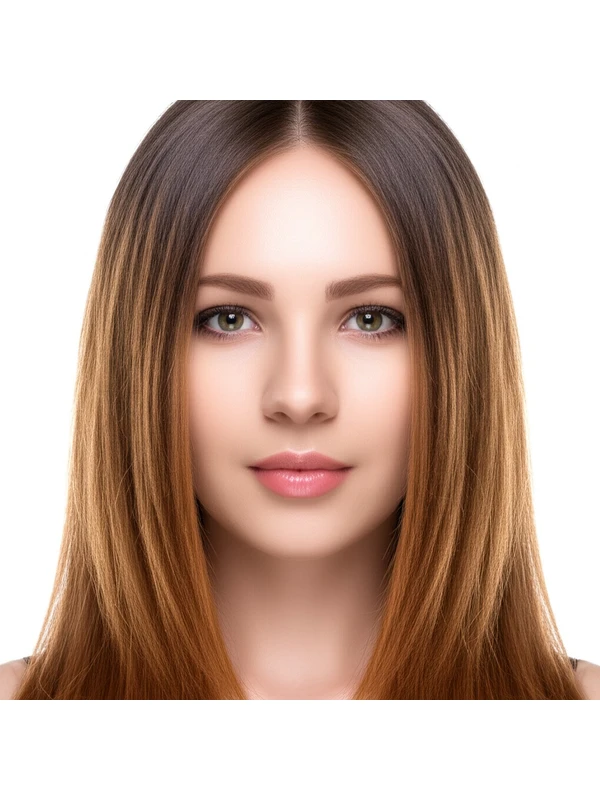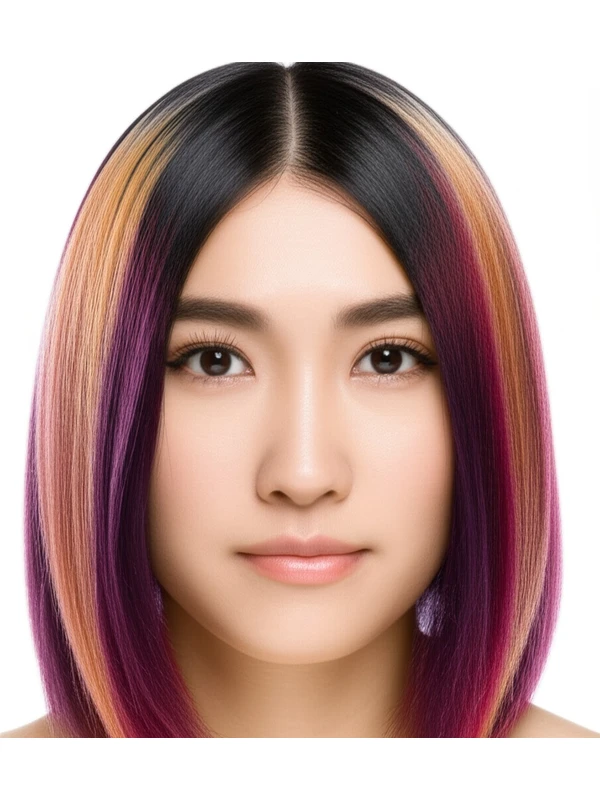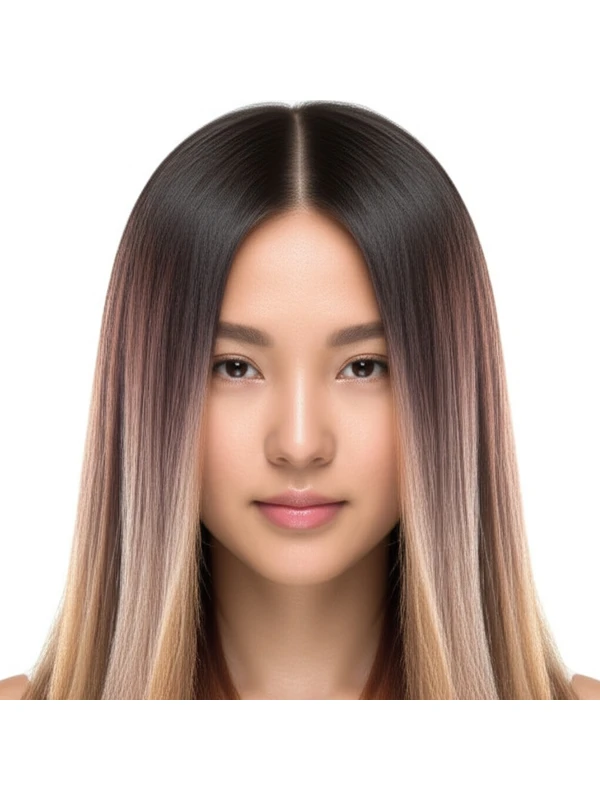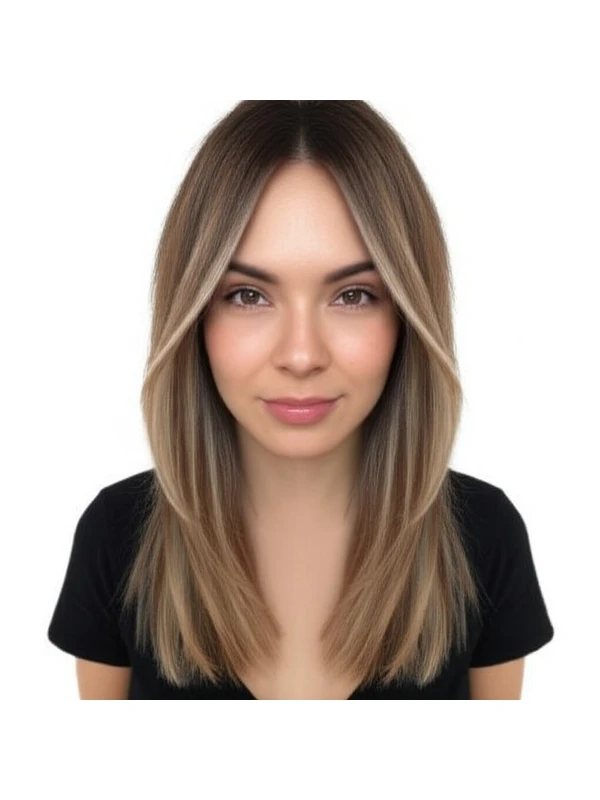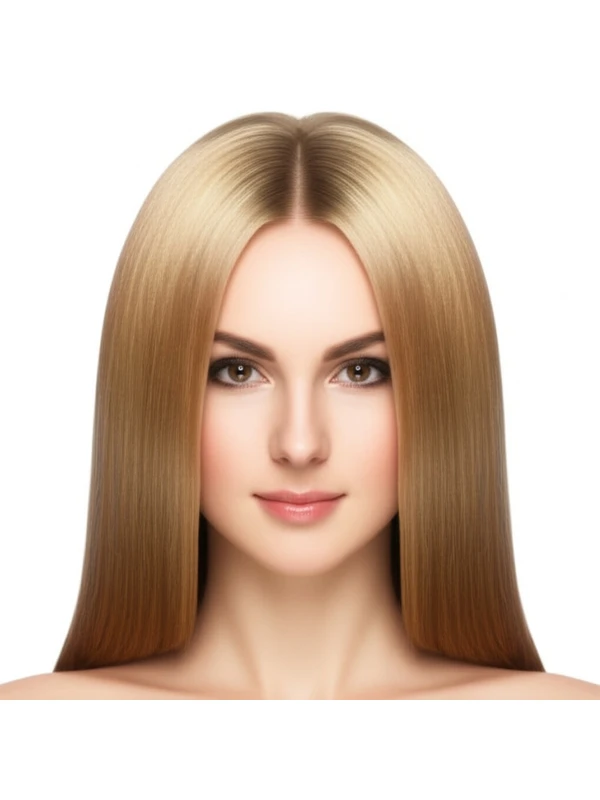#Dimensional Color: A Guide to Richer, More Dynamic Hair
Dimensional color is a popular hair coloring technique that moves beyond a single, flat shade. It creates depth and movement with multiple tones, making your hair look fuller and more vibrant. This guide will break down everything you need to know about dimensional color – from how it’s done to how to care for it afterward.
#1. What is Dimensional Color & How Does It Work?
Dimensional color isn't just one thing; it’s a concept of layering tones within your hair. Think of it like painting with multiple shades instead of just one. The goal is to mimic the natural highlights and shadows you see in healthy, sun-kissed hair.
How it’s done:
- Tools: Your stylist will use foils (or sometimes a freehand technique), brushes, balms, or even strategic application methods depending on the desired effect.
- Placement: Sections of hair are carefully selected and painted/foiled with different shades—typically lighter than your base color but within a range that complements your skin tone. Placement is key to creating the illusion of natural dimension. Face-framing pieces often receive more subtle highlights.
- Timing: Processing time varies depending on your starting color, desired level lift (how much lighter you want to go), and product strength. Your stylist will monitor the hair’s condition closely throughout this process. Multiple tones may be applied sequentially or simultaneously with different processing times.
#2. Best Use Cases: What Can Dimensional Color Achieve?
Dimensional color is incredibly versatile, offering a range of benefits beyond just lighter hair.
- Adds Dimension & Movement: The primary goal! Multiple shades create visual interest and make your hair appear more voluminous.
- Creates Root Blur/Shadow Roots: Strategically placed highlights can soften the line between your roots and colored hair, allowing for longer periods between salon visits.
- Face-Framing Highlights (Money Piece): Brighter pieces around the face instantly brighten your complexion and highlight your features.
- Subtle Coverage of Grays: Dimensional color can blend gray hairs more naturally than a single, solid shade, creating an overall softer look. It doesn't completely eliminate grays but integrates them into the overall design.
- Warmth or Coolness: You can use dimensional color to introduce warmth (golden tones) or coolness (ashy/platinum tones) depending on your preference and skin tone.
#3. Who is Dimensional Color For?
Dimensional color isn't a one-size-fits-all technique, but it’s surprisingly adaptable. Here’s what to consider:
- Natural Hair Color Level: Works well on almost all starting levels (dark brown to blonde). The further you are from your desired shade, the more sessions may be needed.
- Undertone: Your skin's undertone (warm, cool, or neutral) is crucial. Warm tones look best with warmer dimensional colors; cooler tones work well with ashy shades. A stylist can help determine this!
- Hair Type/Texture:
- Straight Hair: Shows off dimension beautifully and evenly.
- Wavy Hair: The waves enhance the visual movement created by the different tones.
- Curly & Coily Hair: Dimensional color adds depth to curls, preventing them from looking flat or muddy. Careful placement is essential for even saturation and avoiding uneven lift.
- Hair Density: Works on both thick and thin hair. On thinner hair, it creates the illusion of more volume. On thicker hair, it breaks up density.
- Hair Length: Suitable for all lengths – short bobs to long layers!
- Lifestyle: Consider your maintenance commitment (more on that later). Dimensional color is great if you want a low-maintenance look with subtle changes over time.
#4. Dimensional Color vs. Similar Techniques
It's easy to get confused by all the hair coloring terminology! Here’s how dimensional color stacks up against similar techniques:
- Balayage: A freehand painting technique that creates soft, blended highlights. Dimensional color can incorporate balayage but is broader – it includes foiling and other placement methods too.
- Foilyage: Combines the precision of foil highlighting with the soft blending of balayage. It’s a specific type of dimensional color that offers more control over lift and tone.
- Highlights: Traditional highlights use foils to lighten strands evenly throughout the hair. Dimensional color uses multiple shades of highlights, not just one.
- Root Smudge/Shadow Root: A technique where the root area is blended with a slightly darker shade to create a softer transition. This often accompanies dimensional coloring for low-maintenance roots.
#5. Maintenance & Longevity: Planning Your Schedule and Budget
Dimensional color requires upkeep, but it can be relatively low maintenance compared to all-over color.
- Salon Timing: Expect initial sessions every 6-8 weeks, followed by refresh appointments every 12-16 weeks (or longer depending on your desired root growth).
- Toner/Gloss Refresh: Toners and glosses are essential for maintaining the vibrancy of the color between salon visits. They help correct any brassiness or fading. These can sometimes be done at home with professional products (see section 6).
- Grow-Out Behavior: The gradual, blended nature of dimensional color means grow-out is much softer and less noticeable than traditional highlights.
- Budget/Time Planning: Initial application can range from $200-$500+ depending on hair length & complexity. Refresh appointments are typically $100-$300+. Factor in the time commitment for each appointment (2-4 hours).
#6. At-Home Care Tips: Keeping Your Color Looking Its Best
- Wash Cadence: Reduce washing to 2-3 times per week to prevent color fade.
- Heat Protection: Always use a heat protectant spray before using styling tools like straighteners or curling irons. Heat accelerates color fading.
- Color-Safe Products: Use shampoos and conditioners specifically formulated for colored hair. Sulfate-free formulas are gentler on the cuticle, helping to preserve color vibrancy.
- Cool Water Rinse: Rinsing your hair with cool water helps seal the cuticle and lock in color.
#7. Pros & Cons of Dimensional Color
Pros:
- Adds depth and dimension to hair.
- Creates a natural-looking, sun-kissed effect.
- Offers low-maintenance grow-out.
- Versatile – suitable for various hair types and lengths.
- Can soften the appearance of gray hairs.
Cons:
- Requires multiple salon visits and ongoing maintenance.
- Can be expensive compared to single-process color.
- Initial application can take several hours.
- Results depend heavily on your stylist's skill and expertise.
#8. Salon Consultation Script: What Your Stylist Will Ask
To ensure you get the dimensional color of your dreams, here are some questions your stylist might ask (and be prepared to answer!):
- What is your current hair care routine?
- Have you colored your hair before? If so, what type of color and when was the last time?
- What is your ideal end result – show me pictures!
- Are there any areas you want more or less dimension in? (e.g., face-framing)
- What is your lifestyle like, and how much time are you willing to spend on hair maintenance?
- Do you have any sensitivities or allergies to hair color ingredients?
- How do you feel about visible root growth between appointments?
#9. Frequently Asked Questions (FAQs)
- Can I get dimensional color if my hair is very dark? Yes, but it will likely require multiple sessions to achieve the desired level of lightness and dimension.
- Will dimensional color damage my hair? Any chemical process can cause some degree of dryness or damage. However, a skilled stylist will prioritize your hair’s health and use gentle products/techniques. Deep conditioning treatments are key!
- Can I do dimensional color myself at home? While touch-ups (toner/gloss) can be done at home with professional products, the initial application is best left to a trained stylist due to its complexity.
- How long does dimensional color last? The color itself will gradually fade over time, but the overall dimension should remain visible for several months. Toners need refreshing more frequently (every 6-12 weeks).
- Is dimensional color suitable for fine hair? Yes! It can actually make fine hair appear thicker by adding visual volume and depth.
- What is the difference between a root smudge and dimensional highlights? A root smudge focuses solely on softening the line where your natural roots meet your colored hair, while dimensional highlights involve strategically placed multiple tones throughout the entire head of hair to create overall dimension. They often go hand-in-hand!
- Can I change the tone (warm/cool) with dimensional color? Absolutely! The shades used in dimensional coloring can be adjusted to introduce warmth or coolness as desired.
- How do I know if my stylist is experienced with dimensional color? Ask to see examples of their work and inquire about their techniques and product knowledge related to this specific style.
